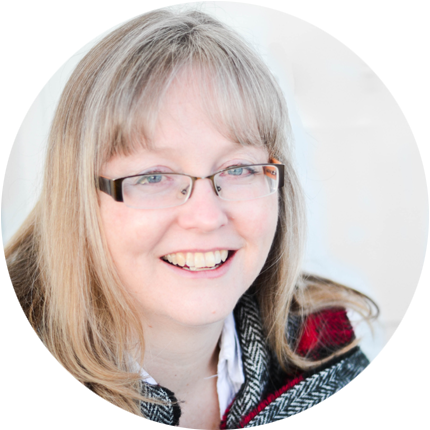
This article about goals for a new piano student was written by Juanita Stauffer. Juanita teaches piano in her home studio in Edmonton, Alberta, Canada. She is actively involved in her local Provincial Association of Music Teachers and loves learning from, supporting and encouraging other teachers. When not teaching piano, she enjoys knitting, gardening, reading and playing the cello.
Stop me if this sounds familiar: You’re halfway through the year, and your new student is speeding through their method book at a breakneck pace. Or, on the flip side, they’ve been taking forever to complete the first 2 units.
Is it possible, though, that you don’t actually have a frame of reference at all?
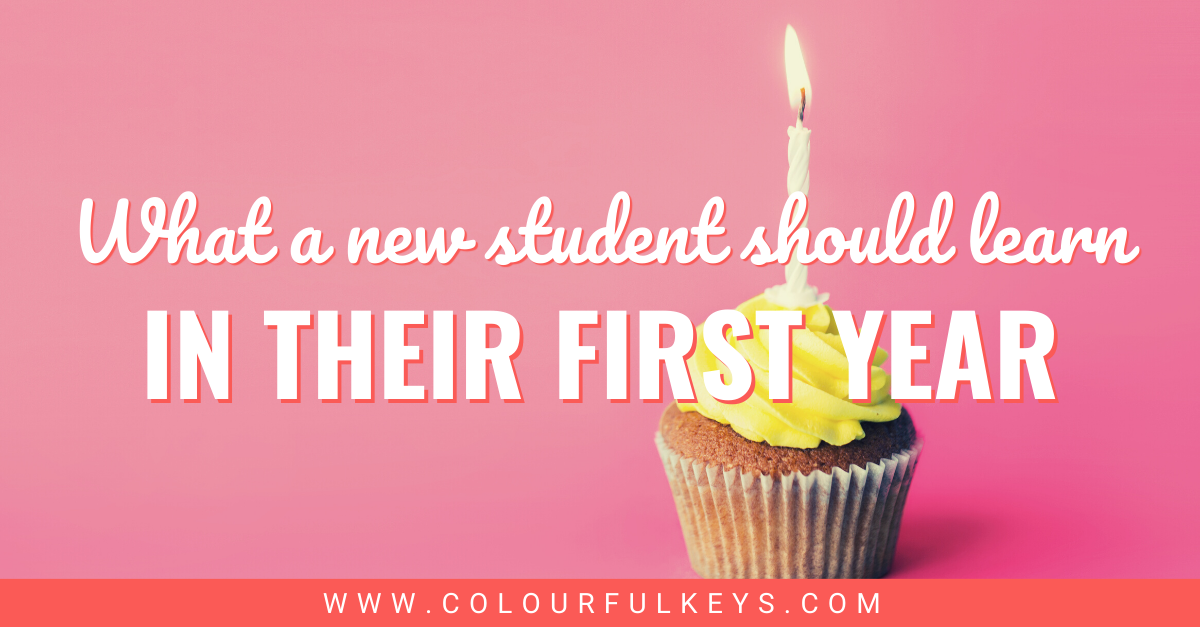
Being able to play the piano involves many different skills. Students need to learn how to use their bodies physically with ease and co-ordination, to process information through their ears and eyes, and to interpret the musicality of what they’re playing.
Benchmarks make sure none of the elements critical to a well-rounded musician fall through the cracks.
If you don’t have goals planned for that beginner piano student, you really can’t gauge with any accuracy if they’re moving at the speed of light or more like a snail. And if you can’t tell, then you aren’t able to adjust your approach accordingly or talk with parents confidently about their kiddo’s progress.
Let’s discuss what an average 7- or 8-year-old beginner student should be able to do by the end of the first year.
Goals by Musical Element
A useful way to break down what a student should know is to consider the main elements of music. Let’s consider these broad areas of study.
Rhythm
At the heart of music study is rhythm, including a sense of steady beat as well as the intricacies of rhythmic patterns.
Pulse
All students should be developing a good rhythmic pulse themselves by the end of the first year. I expect students to be able to hear, feel and move to duple, triple and quadruple time by the end of their first year.
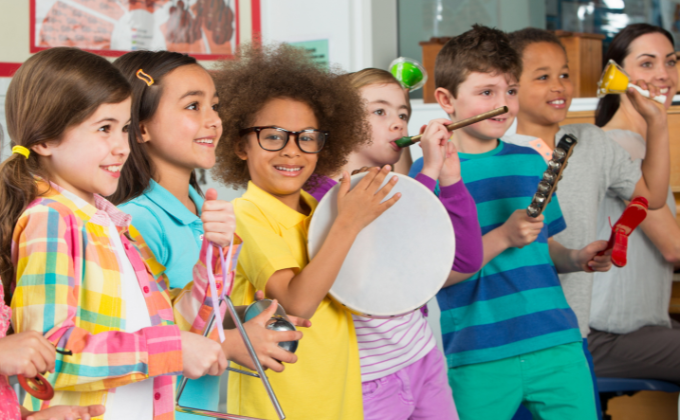
Some students will still struggle with pulse down the road (hello, sonatinas!), but we want to start them on the right path from the beginning.
Note and Rest Values
My first-year goals for new piano students include knowing the time names and values of each of the following, along with how they sound, look and feel:
- Semibreves (whole notes)
- Minims (half notes)
- Crotchets (quarter notes)
- Quavers (eighth notes)
- Dotted crotchets and quavers (dotted quarter and eighth notes)
- Rests for the above values
I think it’s important for students to learn quavers (eighth notes) almost right from the start. Kids naturally chant and feel ti-ti in playground nursery rhymes. They’re also less likely to fall into the habit of seeing eighth notes as “fast notes” if they experience them early on.
Vibrant Music Teaching’s Rhythm Vocab Cards are a great way to measure your students’ progress with rhythm while developing their familiarity with common rhythmic patterns. Enter your details below, and Nicola and the gang will send you a sample set of the cards for FREE!

Subscribe to the newsletter and get the RHYTHM VOCAB SAMPLE CARDS.
Enter your details to subscribe to the newsletter for piano teachers with information, tips and offers.
I hate spam as much as you do! I will only send you emails related directly to piano teaching and you can unsubscribe at any time.
Already a VMT member? No need to get the sample pack; you can download all 4 levels of Rhythm Vocab Cards from the printable library. Not a member? Learn more and take a tour at vibrantmusicteaching.com.
A note about counting: The average student will likely not be able to count metrically in the first year. Or if they do, they might not really understand what they’re doing with numbers. And that’s okay!
Feeling the beats and patterns is the most important thing. Starting out by vocalising rhythms with syllables such as ta and ti-ti is a great way to instill solid rhythmic habits.
Reading Music
Some piano methods advocate for memorising note names from the first lesson, while others hold off for a few years before they require students to read.
I tend to fall right in the middle. What I really want my students to be able to do by the end of their first year is to recognize patterns and intervals.
Landmark Notes
In my experience, students aren’t usually able to read random notes on the grand staff and play them quickly on the keyboard until the end of the 2nd or even the 3rd year – so don’t feel pressured to make your students do this from the start.
It’s most helpful for students to know three to five landmark notes, and be able to find them on the keyboard. From there, they should be able to see which direction the notes are going and by what interval.
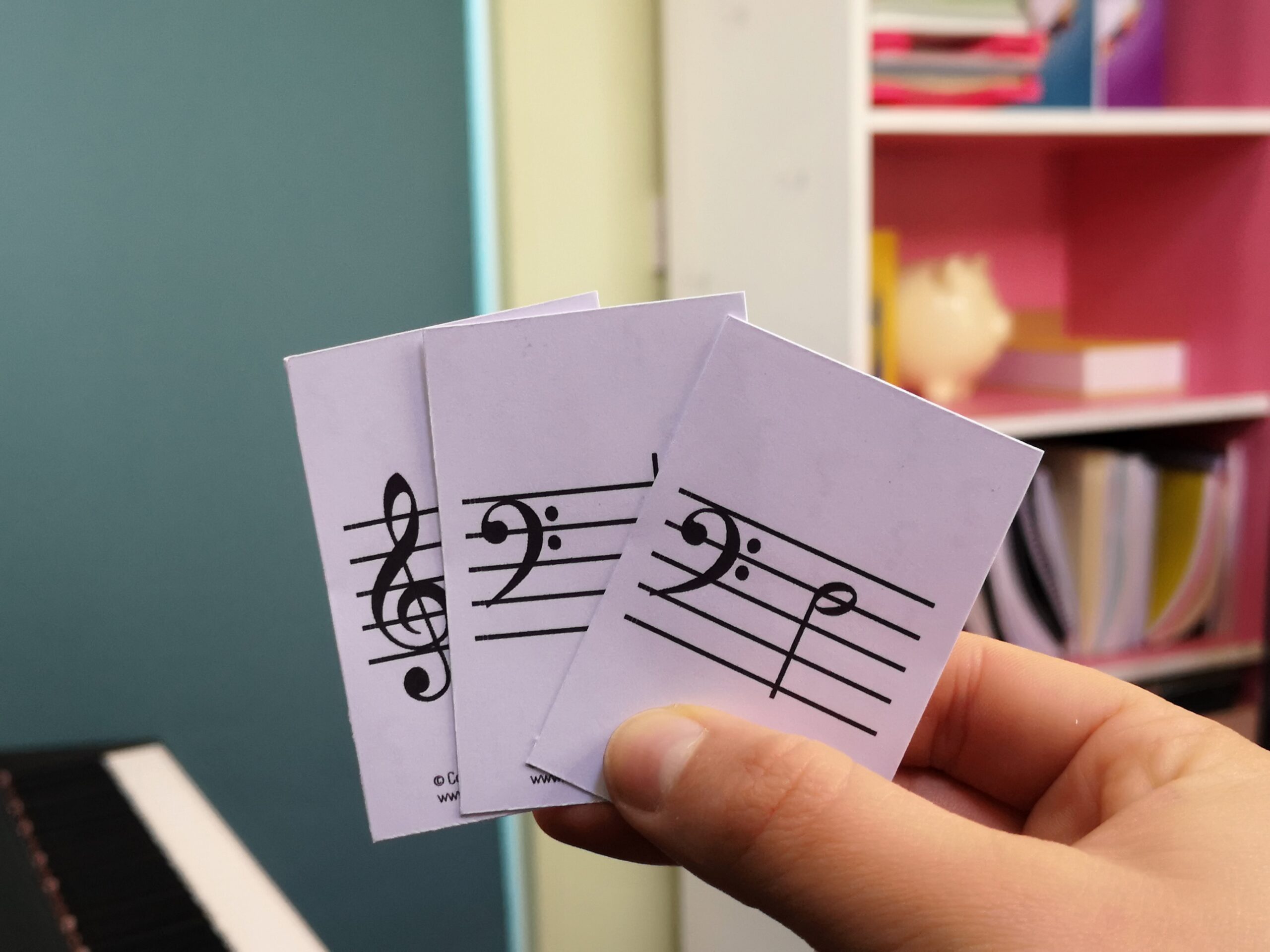
Want to give VMT’s 60-Second Challenge a go? You can find both printable and screen versions in the VMT library.
Intervals
In my studio, new piano students should be comfortable reading 2nds and 3rds after their first year of study.
Older students will be comfortable with 5ths by the end of the year, and be able to recognize the difference between a third and a fifth.
Technique
Technique – the way we physically play the keys – can vary so much depending on the age and developmental stage of our students. The instrument they practise on at home will also affect their technique.
But we can define some basic goals that generally apply to each new piano student. Here’s what I think good technique should look like by the end of year 1:
- Sitting in an upright position at the piano at the proper height and distance from the keys – at home, too, not just at their lesson!
- Being well-balanced on the bench, knowing how to support themselves with their feet
- Hands, wrists, arms and bodies looking natural and comfortable as they play
- Shoulders relaxed with arms moving freely as they play
- Strong hand and and finger positioning, with no flat fingers
Aural Skills, Improvisation and Composition
Ultimately, I hope that by the end of the first year, my students will be comfortable exploring different sounds at the piano and that they will have experience both imitating and developing their own rhythmic and melodic patterns
This is an area that I’m still learning and exploring myself. There’s a greater openness in the musical community to include this in our pedagogy and I hope that we all will learn how to inspire our students in their explorations.
So if you don’t come from an improvisational background, don’t be afraid to explore this part of music-making with your students from the first lesson.
Take the Long View
Whether you use these goals for a new piano student or you develop your own, you’ll likely place more emphasis on one goal over another.

Knowing what your goals are for students will inform what you prioritise in the first year. Because once you know what you’re aiming for, you can determine how to reach those goals – not only in the first year, but in subsequent years, too.
Students develop at different rates and it’s important to keep long-term goals in mind. Determine your goals for aspects such as technique, note-reading and feeling an inner pulse and then decide how to incorporate those goals for each student.
The most important thing is to consistently work through your program of study with the student. If some students’ progress is slower than others, that’s okay!
Don’t get discouraged (or let them get discouraged) but always keep longer-term progress in mind.
Adjusting for Your Student’s Age
The age at which a student starts piano studies will affect what they can achieve by the end of the first year. While the goals discussed above are aimed towards a new 7- or 8-year old piano student, we should also consider some different age categories.
Ages 4 – 6
In general, this group will progress more slowly. You can expect them to take a little longer to grasp how notes move on the staff, and knowing how the beats relate to the rhythm will be more difficult because those are fairly abstract concepts.
At this age, some will have small fingers that seem so floppy and weak. Playing with one or two fingers with large arm movements will help them to grow in strength at the beginning. Focus more on good “piano posture,” using their arms and keeping a more rounded hand shape rather than perfect fingertips or finger independence.
Be patient and recognize that they will get stronger over time.
Some musical young students with very good ears will appear to master the material at a very quick rate. I’ve found that sometimes those students hit a brick wall in year 2 or 3 because they are able to make it look like they are absorbing more than they are.

Make sure that students are progressively working on their reading skills alongside rote learning by incorporating finger numbers, landmark notes, intervallic reading and pitch recognition.
Ages 9 – 12
Practice habits will make a big difference for this age group. Parents tend to let this age be independent right from the beginning and certainly, some students want that independence. But careful parental involvement will help them develop good practice habits and set them up well for future study.
On the younger side of this group, it’s better to start with a slower-paced method and skip ahead quickly as needed rather than frustrate them from the beginning with something too difficult.
With support at home, this age group can often learn in the first year what a 5- to 7-year-old would learn in the first 2 years.
Teenagers
By the end of their first year, a teen beginner will ideally be starting to play what they’re really interested in. My goals for a new teen piano student include:
- Reading intervals up to an octave fluently
- Recognizing most of the notes on the grand staff by sight
- Having a good feel for the big beats, and being comfortable with various divisions of the beat
- Developing hand independence so that they can both play a chordal accompaniment to a melody and play some easy contrapuntal music
However, this is very dependent on the student’s level of motivation and how much they are willing to do the initial work. It also depends on whether they’ve had exposure to musical concepts with another instrument.
Teens can be very motivated to learn quickly. But if they think that it’s too hard or the music isn’t interesting, their progress can slow to a crawl.
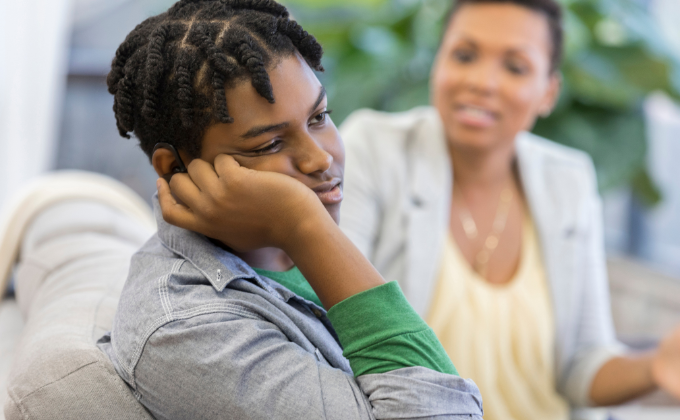
Ideally, a teen student will be able to play a big-sounding piece at the first recital to gain a feeling of accomplishment and motivation to keep working. Finding the right pieces that can be learnt by rote or by note-naming is important.
The last thing a teen student wants is to play something that sounds too babyish – teachers should work to find music that’s inspiring but not too hard.
Adults
An adult student’s progress is perhaps the most variable as it depends so much on their time commitment, technical abilities, musical background and ability to process new concepts. It also depends on the goals you set out together at the beginning – the reason why they want to learn in the first place.
By the end of the first year, a new adult student may have completed the equivalent of the first 2 – 3 books of a young student’s method (probably equal to book one in an adult method) and they may even be playing some simple sonatinas.

What are your first-year goals for a new piano student?
Do you think my goals are realistic? Did I leave any out? Share your thoughts in the comments below.
For the latest-and-greatest resources on developing your own curriculum, check out Nicola’s hub page devoted entirely to Planning Piano Lessons.